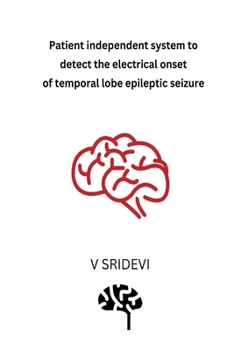Patient Independent System to Detect the Electrical Onset of Temporal Lobe Epileptic Seizure
Epilepsy is the most common neurological disease comprises a heterogeneous group of
disorders, characterized by recurrent and unprovoked seizures due to the huge electrical
discharges of large synchronized neurons. This hypersynchronous neuronal activity
produces sustained action potential and repolarisation followed by hyperpolarisation,
designated as Paroxysmal Depolarization Shift (PDS), as illustrated in Fig. 1.1. This
abnormal activity changes the frequency and amplitude characteristics of the normal
EEG and produces sustained oscillations with high amplitude and low-frequency spikes
and slow-wave complexes. This huge potential affects the normal function of the
neuronal network which leads to the loss of consciousness and involuntary body
movements.
The cerebral cortex of the brain consists of many layers of neurons that are
responsible for action potential propagation. There are two types of neurons named
the Principal or Projection neurons and the Inter neurons or local neurons. The
principal neurons are producing excitatory synaptic potential and the inter neurons
produces inhibitory synaptic potential.
In the neuronal network connection, both neurons are interconnected and the response of these neurons are summed up to
activate the neighbour neurons. The inter neuron is connected with the projection
neuron and provides feed-forward inhibition; The projection neuron is connected with
inter neuron and then the inter neuron induces feed-back inhibition on projection
neuron. Thus the combined activity of these two neurons control the synchronous
activity of large neurons population. Moreover the inhibition and excitation of neurons
are the electro-chemical processes.
Seizure may develop as a result of inheriting a mutation in a molecular mechanism
that regulates neuron behavior, or organization of neuronal network. Alternatively, it
may develop as a result of brain trauma such as a severe blow to the head, a stroke, a
cerebral infection, or a brain malignancy. The symptomless gradual transformation
from normal neuronal network to abnormal neural network is the period called as
silent period. During the silent period, the changes occur in the organization of
axons, loss of specific neuron (in particular inter-neurons and projection neurons
driving inter-neurons), sprouting of axons to elicit large population of neurons and
voltage-gated and ligand-gated channels property changes. This extensive change in
synchronisation results permanent changes in the physical and biochemical structure of
brain cells.





